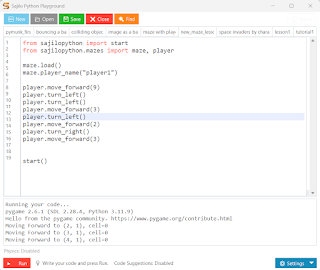Diving into the world of programming for the first time can feel like standing at the edge of a vast, unfamiliar ocean. There are so many languages, so many concepts, and so much jargon—it’s no wonder that many young learners feel overwhelmed before they even write their first line of code.
For most beginners, especially students, the first roadblock is simply choosing where to begin. Should they start with Python? C++? Java? Scratch? Every resource seems to recommend something different. And even when they do settle on a language, what often follows is a dry, textbook-like journey into lists, tuples, dictionaries, and data types—important, yes, but rarely exciting or intuitive for a curious young mind.
Let’s face it—traditional programming education wasn’t built with children in mind. It’s often built for adults or university-level learners and then "simplified" for younger audiences. But young learners don’t just need simplification; they need context, visual feedback, and a sense of fun. They need to build something that feels alive, something they can show their friends, something that says: “I made this!”
Enter SajiloPython: Making Programming Intuitive, Visual, and Fun
At Beyond Apogee, we realized that there needed to be a better way to teach kids programming—something hands-on, visual, and immediate. That’s why we built SajiloPython, a learning library and environment designed specifically for young coders.
SajiloPython is not just another programming tool—it’s a complete experience that helps students see the result of their code in real time. Instead of memorizing syntax and writing dry definitions, students use commands like cat.move_right() or parrot.say("Hello!"). Within seconds, they see animals come to life, characters jump across the screen, and backgrounds light up with animation.
It’s playful—but don’t be fooled. Behind the simplicity, students are learning the core fundamentals of coding: logic, sequencing, object-oriented thinking, and event handling. As they build games, design animations, and simulate stories, they’re unknowingly training themselves in key programming concepts—all without the stress of jargon or error messages that make no sense to a beginner.
What’s more, SajiloPython runs inside the Sajilo Python Playground, a kid-friendly IDE that simplifies the entire experience of writing and running code. It looks and feels like a place made for students, not software engineers. And that matters. When the learning space feels accessible, the learning itself becomes far less intimidating.
Why It Works
SajiloPython works because it turns coding into a language kids already speak—play and imagination. Just as they learn best through stories, art, and play in their early years, they learn programming best when they can build something that excites them. It gives them the power to control characters, shape environments, and build games with code, which in turn builds confidence, curiosity, and a love for technology.
Most importantly, it helps students understand what a programming language actually is. Once that wall of fear is removed, they’re more open to exploring deeper concepts, transitioning into Python proper, or even diving into AI, robotics, or game development later on.
At Beyond Apogee, we’ve seen the transformation firsthand. Students who were too shy to speak up in class are now presenting their projects proudly. Those who struggled with syntax errors are now experimenting with original game ideas. They’re not just learning to code—they’re learning to think, to express, and to build.
Final Thoughts
The future belongs to creators, not just coders. And for young minds to become creators, we must hand them the right tools—tools that teach through joy, creativity, and exploration.
SajiloPython isn’t about competing with the big platforms. It’s about lowering the entry barrier so that every child, regardless of their background or age, can take their first step into programming without fear.
Because when coding feels like play, the possibilities truly go beyond the apogee.




It's exciting to see how far we've come in making robotics education more accessible and engaging for students of all ages. At Beyond Apogee we're proud to be part of a movement that's not only teaching technical skills, but also inspiring creativity, problem-solving, and teamwork. Whether it's through hands-on kits, coding challenges, or classroom innovation, we're committed to shaping the next generation of tech leaders. Let's keep building the future—one robot at a time!
ReplyDelete